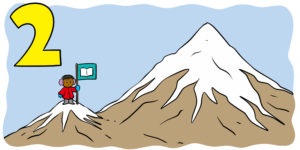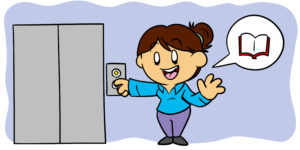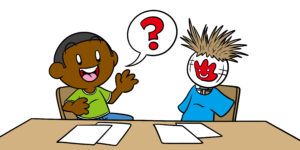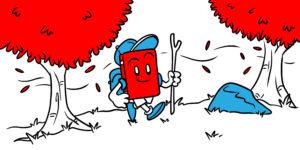You want to get media coverage to promote your book. You’ve done the press release thing. You’ve created a stir on Twitter, you even dressed up as a character from your book and ran around town quoting lines from it.
But the phone just isn’t ringing.
What you don’t know is that yesterday, your website was visited by Jake, the literary editor of a major newspaper in New York.
He came, saw, and then seemingly left rather quickly.
But why?
Well because you didn’t make life easy for him. Yes, your website had some blog posts, links to your book on Amazon, but no central place for Jake to find all of the things he needed to convince him you are worth writing about.
So what could you have done differently? What is the missing link between your promotional efforts and that prized newspaper piece, radio interview, or talk show slot?
It’s your Author Media Kit, also known in the print-focused world as an author press kit. The sole purpose of which is to sell you to the media and provide them with bite-sized nuggets of information for their journalistic endeavors.
After all, Jake doesn’t have time to sift through your website looking for your contact details; he actually doesn’t even have time to call you. He’s got 5 articles to write today and a print deadline hanging over his head. Never mind what’s going on in his personal life.
That’s why you need to make things easy for him. Show him why you, and your book, are exactly what HIS audience want to read about.
The key elements of an Author Media Kit?
An author bio
You’ll need two bios: one short and one long. Or, at the very least, one long bio where the first paragraph or two can stand on their own.
Some quick pointers on your author bio:
Be engaging. Unless you are writing cat books for an audience of cat lovers and want to get interviewed on cat.tv, no one cares about your cats (I do, I love cats, but the media doesn’t). However, if your cat once dragged in an old key, covered in moss, which inspired you to write your first adventure novel, well that is engaging and has to go in the bio.
Be yourself. Try and inject as much of your personality as possible into your bio. Don’t force humor into it if you don’t have a funny bone in your body. Try and show people that you are not just an author, but a real live human being as well and they may just form a connection with you.
Try and include anything that will make you stand out from the crowd.
EXAMPLES
[Your name here] is the author of [your genre here] novels [your book titles here].
She started writing horror stories after being trapped in an archaeological dig for 2 days. This was the subject of her breakthrough novel.
He started writing (sometimes corny) Science Fiction after seeing a worm hole in an apple.
After having her life saved by a man dressed like Sherlock Holmes she became fascinated with him and started writing fan fiction.
An author photo
This is all about you building a brand. Go and get a professional author photo. Go and do it now. Actually, wait, finish reading this and THEN go and get it done. Once you have an author photo NEVER CHANGE IT!
It will be something that people identify with for years to come. When Ian Fleming’s photo wasn’t included on the cover of one of his books, readers were up in arms.
Look at self-published author David Gaughran, his photo is brilliant, it’s instantly recognizable.
If you’ve got amazing photo skills (or have a friend who does) then by all means do it yourself. Include a prop, smile, be sincere, whatever it takes to reflect yourself and your personality.
Make sure you have copies of the photo in 300dpi resolution (for print) and 72dpi for the web. If you want to go all out, have a choice of photos and provide them in B&W as well.
Here’s a great example of an author press kit with a lot of photos.
Reviews / Awards
If you have reviews then you need to include a few of the best here. Don’t include too many, just keep it short and sweet. Do include the one from the New York Times, don’t include the one from your mum, her opinion doesn’t carry any weight here (unless she’s the editor of the New York Times Book Review).
You should also include any awards you have won, especially if they have a shiny badge that you can embed on the page. It’s all about verification.
Relevancy
What you need here is to show that you have actually thought about your target market and who your book appeals to. If you can lay out a reason why your book appeals perfectly to a certain cross section of the disaffected youth of today, then the editor of Disaffected Youth will be far easier to convince to cover your story.
The media are only out to provide stories that are relevant to their audience, so it is your responsibility to make yourself relevant to the right people.
Press contact details
If you’ve got someone doing publicity for you, or even a publisher, then make sure that their contact details are immediately obvious. If a journalist likes what you have to offer, they will be in touch for a follow up.
If you are a multitasking independent author, then try and provide contact information that looks professional. For example, a phone number and an email address that isn’t [email protected] but [email protected] (you do have an author website, don’t you?).
Some sample interview questions
In keeping with the theme here, we’re trying to make it easy. Journalists don’t want to have to think too much. Give them some sample interview questions that allow you to showcase your amazing personality and your life changing book. You can be straightforward or creative, it’s entirely up to you and does of course depend on your genre. A book on poverty in the third world is going to need a different approach to a quirky Young Adult novel.
You can even pre-answer the questions, it just make things easier for the really lazy busy researcher.
Social media, videos etc.
Provide a list of links to all of your social media profiles. People do want to see what else you are up to.
If you have done interviews or podcasts then embed them, or at least provide links to them. People will want to see if you come across well on the screen or if you have an appealing voice. If you haven’t done any interviews yet then I would strongly recommend doing a video interview with a friend, recording it and putting it in.
Press release
Include the latest press release for your book. While your press release will of course have been tailored to each and every media contact that you send it to, you should also have a generic one. Put a link to it here.
Speaking engagements / Events
If you’ve got some exciting events lined up then include them, but don’t go overboard.
Okay, so we’ve got the essentials of your author press kit together. Now what?
First rule of author media kit success: Keep it updated. New books, new photos, new press releases, new events? Make sure they find their way to your kit.
Second rule of author media kit success: Make some noise. Generate some publicity. Approach media contacts with carefully designed press releases. You get the idea.
Third rule of media author kit success: Make it visible on your site. Put a menu item in your navigation bar, right next to the “about” and “books” links.
That’s it! Your next step is to get back to your writing so that you have plenty of books ready to sell when Oprah, the New York Times, or even your local college radio show come knocking at your door.
If you want a full media kit template then you can get one by clicking here.
And to give you some inspiration, here are some Author Media Kit examples:
Fiction Author Media Kits
CJ Lyons | Stefanie Sloane | Adrienne Giordano | Carly Phillips | Lisa Jackson
Non-Fiction Author Media Kits
I’d love to see examples of your own media kits in the comments.






11 thoughts on “Media Kit Secrets That Get You Better Press Coverage”
Alex I am up and running my web site that is. Please check it out. Let me know what u think.oh I didnt win award but it was an honor to be nominated. Thanks for your help.could not have done it without your help.
Hi Marie, I’m so sorry to hear that you didn’t win the award, maybe next year.
I had a look at your site and it looks great. Glad I could help a little.
Good luck, and let us know how you get on.
What website company did you use.
Thanks for this post. Thought you might like to see the Media Kit page I created based on your suggestions & examples: http://www.jackwootton.com/#!media-kit/ctwy
Feedback appreciated. If you like it, feel free to add it to your Example Media Kits above.
-Jack
Hi Jack,
Thanks for sharing your media page, it’s a great example of how to do it right and is a good resource.
One thing I would suggest is linking your images through to higher resolution versions of themselves, just in case anyone wants to print them (local newspapers etc.).
Alex
Great reminder, thanks. I’ve implemented your suggestion.
An excellent, easy to follow article. Thank you! I thought Michael Hyatt did a particularly good job and I’ve included a number of elements from his media kit on my own page, including a list of contents at the top, hash tag suggestions for social media, a note to fan reviewers, and something I will implement soon – code snippets which allow people to display images and banner links on their own sites. I also loved the idea of ‘fun facts’ taken from one of the other press kits you linked to.
Here is my page which includes all of those:
http://ericjames.co.uk/media-kit/
Hi Eric,
thanks for stopping by and for sharing your media kit, it’s turned out really well. I think image code snippets are a great idea if you can include them.
Good luck with your books (and the asparagus throwing).
Hi, how do I produce a media kit to call on international reporters to cover a story on someone who has been acquitted in court yet is faced jail term by supreme court who overturned the free verdict a year later? Thanks
Hi Andi, an author’s online media kit is designed to provide the media with a single place to get all information about an author and their books. You would need to pitch reporters directly with a story like that.
Hi Alex
Thanks for the really useful article. Do you have any advice on what kind of headshot would work. With our without book ? black and white etc ?
Cheers
Kavita